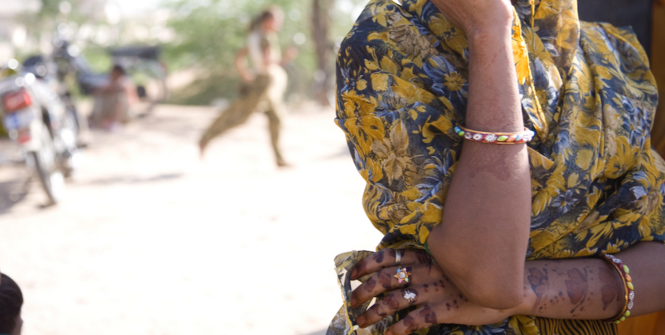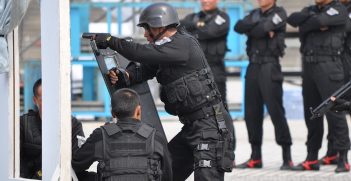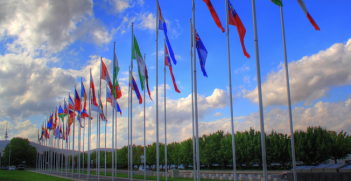The Politics of Anti-Trafficking Efforts

Today is the International Day of the Migrant, and while much of the world’s migration can be seen as a social good, human trafficking remains a complex social phenomenon present in virtually all countries.
Tackling it requires multifaceted processes involving a wide range of policies and programs aiming at deterring trafficking offenders, making the crime less profitable but also decreasing the vulnerability of certain groups to trafficking and other forms of labour exploitation.
Human trafficking involves the movement of people for the purpose of their exploitation and is a form of transnational crime akin to modern-day slavery that, according to INTERPOL, is known to be the most lucrative source of profit for organised crime after drugs and arms trafficking. Almost all countries in the world are affected by human trafficking, whether as countries of origin, transit or destination for victims.
Australia alone has committed over AUD $150 million to support a range of domestic, regional and international anti-trafficking initiatives, including AUD $50 million to the Australian aid program for the Australia-Asia Program to Combat Trafficking in Persons (AAPTIP) 2013-2018. The AAPTIP is part of Australia’s support for programs strengthening criminal justice responses to human trafficking in Asia, and particularly in countries of ASEAN. However, despite the efforts taken so far the number of victims of human trafficking is increasing worldwide, in particular in Asia.
The worldwide attempts to address human trafficking are guided by the UN Protocol to Prevent, Suppress and Punish Trafficking in Persons, Especially Women and Children, Supplementing the UN Convention against Transitional Organised Crime (2000) (the Trafficking Protocol), and a number of other international and regional instruments to that affect, including the Council of Europe Convention on Action against Trafficking in Human Beings (2005) or the newly adopted ASEAN Convention Against Trafficking in Persons, Especially Women and Children (2015).
The Trafficking Protocol was developed by the UN Crime Commission as a law enforcement instrument seeking to redefine human trafficking as a transnational crime. It is not a human rights instrument and thus has relatively weak language in respect to the protection and rights of victims. This approach is often reflected in the corresponding regional instruments and domestic trafficking legislation and policies.
Despite the increased public awareness of and efforts undertaken at the domestic, regional and global levels, the problem of human trafficking is increasing both in the numbers affected and geographical reach. Some difficulties in addressing human trafficking include the lack of accurate data on the scale of it, the lack of uniformity in domestic reporting systems, discrepancies in domestic legislation as well as insufficient comprehensive research capable of guiding practitioners, advocates, policymakers.
Notwithstanding the complexities of collecting reliable data and researching in this area, the regional and domestic responses have been plentiful but their effect mixed. One of the most influential political tools remains the ranking by the US State Department published in the annual Trafficking in Persons (TIP) Reports, with the latest one released in July 2015. TIP reports are based on a 3-tier system where countries are ranked from “Tier-1” – when they meet the “minimum standards for the elimination of trafficking”, as defined under Section 108 of the US Trafficking Victims Protection Act (TVPA), to “Tier-3”, the lowest ranking, implying that these countries are the least successful in meeting the “minimum standards”.
US International Programs funding is awarded accordingly and there are further sanctions in accessing aid from the International Monetary Fund or the World Bank for countries with the worst human trafficking record. The TIP Reports are thus an important diplomatic tool capable of creating significant political pressure, especially on developing countries which rely on foreign aid.
Such global country-to-country peer pressure might be seen as desirable but, in practice, things tend to be somewhat more complex. First and foremost, TIP ranking predominantly emphasises policing and prosecution in the context of counter-trafficking action without requiring the countries to or assisting them in addressing the root-causes of human trafficking or devising programmes to assist victims of trafficking. In response, some countries, in order to satisfy the conditions and improve their ranking, have introduced policies that are not desirable in their outcomes, especially long-term.
Some examples include Cambodian Foreign Marriage Prakas curbing Cambodian’s women ability to marry foreign men in an attempt to minimise trafficking of women through fraudulent or otherwise marriages but which, at the same time, restricts Cambodian women’s right to marry and found a family on equal basis to Cambodian men. Elsewhere in the region, Thailand’s relegation to “Tier-3” in the TIP Reports in the last two years has met with the Thai Government escalating its anti-trafficking response by cracking down on trafficking camps in the southern part of the country. Yet again, these arguably positive efforts to fight human trafficking have certain undesirable consequences, including that they lead to the victims rescued as a result of these campaigns being denied protection and assistance and, consequently, expelled from the country.
A brief survey of the TIP rankings since the process was launch in 2001 shows that very few counties in Southeast Asia have improved their ranking, thus putting in question the effectiveness of foreign aid in that respect. Any actual improvement in the human trafficking record in these countries is equally doubtful. According to the International Labour Organisation’s Data Initiative on Modern Slavery the Asia-Pacific region continues to harbour over half of the world’s estimated 21 million victims of forced labour, including trafficking.
The 2014 Review published by the Global Alliance Against Trafficking in Women (GAATW) highlights the frequent lack of scrutiny of how aid funding is spent and who benefits from the anti-trafficking programs, which are frequently poorly designed responses to the problem at hand and their impact not comprehensively assessed, if it is at all.
Not only the aid-receiving countries that are to be blamed for the apparent lack of improvement in addressing human trafficking. The global anti-trafficking agenda, led by the aid-giving countries, with its focus on border control and national security and prioritising law enforcement approaches in the attempt to control human trafficking, must share the blame.
Human trafficking is a complex social phenomenon and should be approached as such. Effective responses should encompass approaches that examine the close link between human trafficking and migration in general, and irregular migration in particular. The Asia-Pacific region has been experiencing an increase in irregular migration and this trend will most likely continue, also due to recurring natural disasters and the impact of climate change. Migration and human trafficking thus must be considered as mutually reinforcing phenomena.
The nexus between migration and human trafficking should be considered as a broader issue of development rather than exclusively a matter of national security. There is a need for coordinated approaches capable of addressing the underlying causes of inequality that makes marginalised communities more vulnerable to trafficking and other forms of labour exploitation. Human trafficking thus needs to be considered not only as socially but also economically driven.
Dr Natalia Szablewska is an international lawyer and human rights expert. Her current research projects focus on the impact of anti-trafficking policies in post-conflict societies. This article can be republished under a Creative Commons License.





